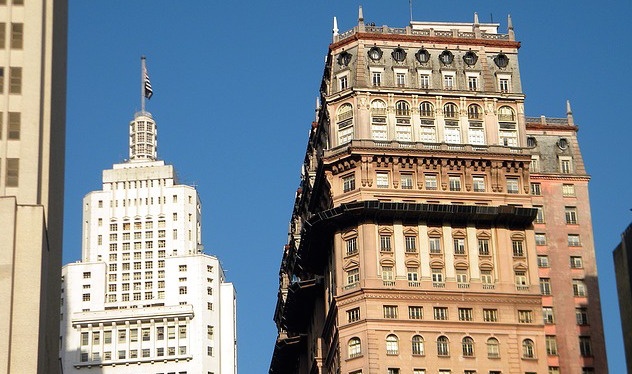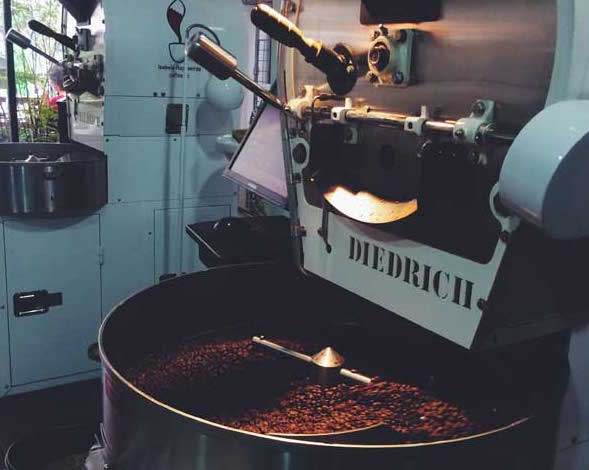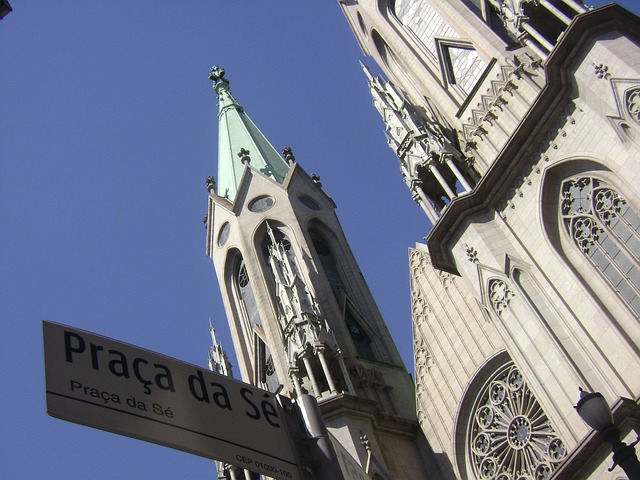Named after Saint Paul of Tarsus, São Paulo is Brazil’s vibrant financial center. As well as being Brazil’s richest state, it’s also the largest city in South America.
Located in the southeast region of Brazil, it’s well worth a visit, especially if you are into cool architecture. We’re thinking here of its iconic buildings, from its neo-Gothic cathedral and the 1929 Martinelli skyscraper to modernist architect Oscar Niemeyer’s curvy Edifício Copan.
Travel blogger Alisa shares the lowdown on São Paulo!
What comes to mind when I tell you that I went to Brazil? Football? Salsa dancing? The Amazon rainforest? Tanning at the beach? I went to Brazil and I did none of those things!

The purpose of my trip was to meet my dear pen pal of 10 years, and get to know his city, São Paulo. When I tell Brazilians that I only visited São Paulo, they usually look disappointed and tell me that I saw the boring, business side of Brazil. I beg to differ—Brazilians have a rich, artistic heritage that is more alive than ever, so take a day to explore the art and architecture this city has to offer.

Catedral de Sé sits in the city centre, and the plaza buzzes with demonstrations by people of many different religions. This neo-gothic cathedral took 54 years to build, and was finished in 1967. But the church plaza has been in use since the 16th century, serving as a spiritual, political, and physical orientation point. I was impressed at how the neighbourhoods around the church have blended their European, African, and Asian roots to make up modern-day Brazil.
From Sé Square, make your way to Avenida Paulista, the most famous street in São Paulo. It is a financial hub, a major artery in the city, but is pleasantly walkable. Stop for lunch at one of its delicious sidewalk cafés and enjoy a couple of hours of people watching.
Stroll down Avenida Paulista to the Museu de Arte de São Paulo, otherwise known as MASP. The art museum is suspended over an outdoor square that has local artisans vending their handiwork, antique sellers, and depending on the day, political demonstrators. The museum itself owns an impressive collection of important historic and contemporary works—including pieces by Cézanne, Matisse, Picasso, Botticelli, El Greco, Van Gogh, Diego Rivera, and Almeida Júnior. Can you tell I was in heaven?

For an afternoon pick-me-up, I highly recommend visiting Coffee Lab. Its team of informed hipsters handpicks the coffee blends and supervises the roasts on site. When you visit, you can order a “service” and have a professional explain the creation of that perfect cup. I ordered the cappuccino service, and got a taste and a short history of the differences between Italian and Brazilian cappuccinos. Buy some bags of beans and traditional Brazilian rapadura candies to bring back as gifts for your not so lucky friends.
Top 5 Facts about Brazil
Language Spoken: Portuguese
Currency: Brazilian Real
Local Dishes:
Feijoada – stewed beans with beef and pork, served with rice, sautéed greens and farofa
Farofa – finely ground cassava flour that is toasted in a pan with bacon and served as a side to feijoada and barbequed meat
Pastel – a savory deep-fried pie that is filled with cheese and meat
Climate:
Brazil is a huge country, so the weather varies dramatically depending on where you are, and what time of year you go. Just remember that the Southern Hemisphere has the opposite seasons as the Northern Hemisphere—so if you are looking to take your winter holidays there, pack clothes for the summer heat. São Paulo is in the southeast region, on the boundary between tropical and temperate South America. Because of its elevation, it has a pretty temperate climate; July is the coldest month, with an average temperature of 58 °F (14 °C) and occasional frost. The warmest is February, which averages 69 °F (21 °C).
Fun Fact: Brazil was named after the Pau Brasil tree – otherwise known as Brazilwood. The wood has a warm, red color, and is used to make bows for stringed instruments.
Be sure to learn a little Portuguese before you go, to be able to chat with the expressive and extrovert ‘Paulistanos’.
Andrie Steliou
Latest posts by Andrie Steliou (see all)
- 8 Ways to Help Keep Your Child Focused and Engaged in Online Learning - October 19, 2022
- How to Improve Social Intelligence Skills? - May 10, 2022
- How to Improve Organizational Skills at Workplace? - May 6, 2022

